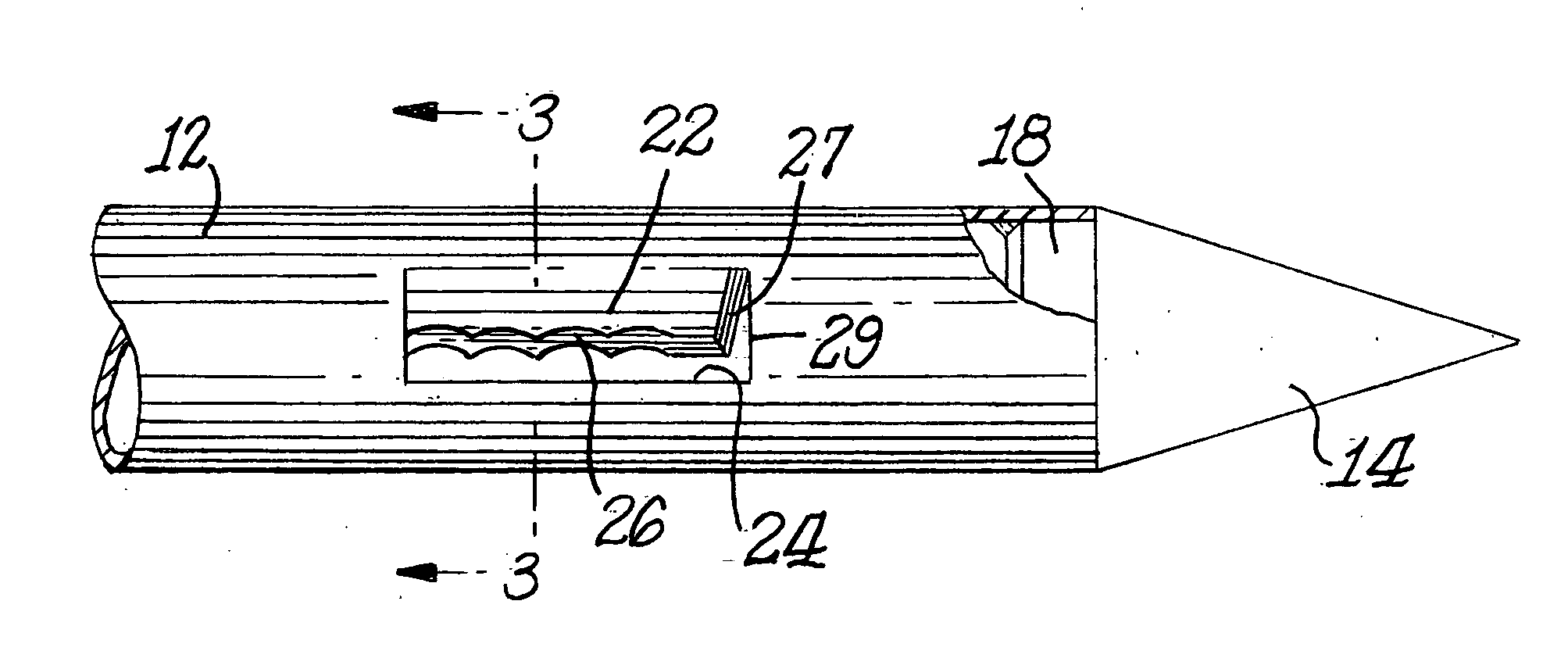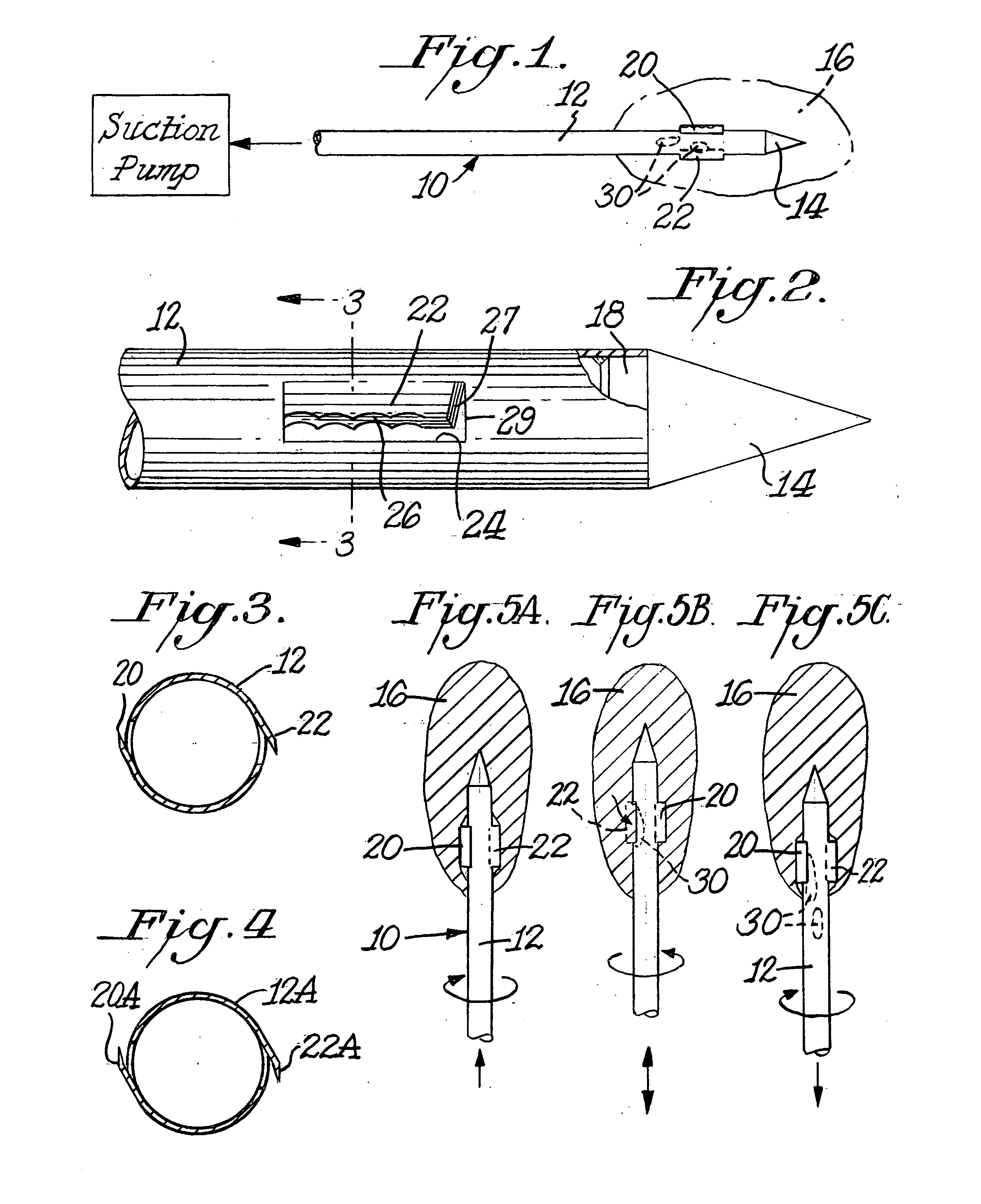Ultra-fine micropsy needle
- Summary
- Abstract
- Description
- Claims
- Application Information
AI Technical Summary
Benefits of technology
Problems solved by technology
Method used
Image
Examples
Embodiment Construction
[0017] The present invention is directed to providing an ultrafine micropsy needle which would dramatically alter the risk / benefit ratio when it comes to the percutaneous sampling of human tissues for diagnostic purposes. In accordance with this invention the ultra-fine micropsy needle has an outside diameter of less than 1.0 mm and preferably in the range of 0.01 mm to less than 1.0 mm. The maximum outside diameter could be no greater than 0.8 mm or no greater than 0.6 mm or no greater than 0.4 mm or no greater than 0.2 mm or no greater than 0.1 mm.
[0018] In order to provide such a needle proper manufacturing techniques and materials would have to be used to attain the functional designs of the desired dimensions.
[0019] The invention could be practiced where the needle is a specimen retrieving needle having structure for cutting and then retrieving a specimen.
[0020] In accordance with this invention a specimen retrieving needle is provided which is may be considered as an ultra-...
PUM
 Login to View More
Login to View More Abstract
Description
Claims
Application Information
 Login to View More
Login to View More - R&D
- Intellectual Property
- Life Sciences
- Materials
- Tech Scout
- Unparalleled Data Quality
- Higher Quality Content
- 60% Fewer Hallucinations
Browse by: Latest US Patents, China's latest patents, Technical Efficacy Thesaurus, Application Domain, Technology Topic, Popular Technical Reports.
© 2025 PatSnap. All rights reserved.Legal|Privacy policy|Modern Slavery Act Transparency Statement|Sitemap|About US| Contact US: help@patsnap.com



